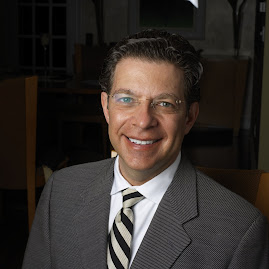Friday, June 22, 2018
Tuesday, April 3, 2018
Sunday, November 26, 2017
Saturday, September 24, 2016
The Donald K. Johnson Eye Institute
Seeking sight for more eyes
Kathryn Boothby, Special to National Post | September 24, 2016 | Last Updated: Sep 24 12:01 AM ET
More from Special to National Post
More from Special to National Post
SuppliedDonald K. Johnson, business leader and philanthropist
Vision loss is reaching a crisis level in Canada. In 2007, more than four million Canadians were living with blinding ocular disease, according to the National Coalition for Vision Health. That number is expected to double by 2020.
The social-economic impacts are enormous: social isolation, high unemployment and emotional distress for the individual; $15.8 billion in annual costs for the health-care system in 2007 alone; and annual economic costs expected to reach $30.3 billion by 2032.
SuppliedDr. Robert Devenyi, Co-Director of the Donald K. Johnsons Eye Institute
An aging population is but one of the factors influencing the rise in the demand for subspecialty ophthalmology services, says Dr. Robert Devenyi. “The demand for our services is exploding far beyond what the predictable demographic rise in the aging population would dictate,” he says. “This is because not only is the number of elderly people increasing at an exponential rate, but we can now treat many conditions which a few years ago we could not.” Devenyi is ophthalmologist-in-chief at University Health Network and co-director with the Donald K. Johnson Eye Institute in Toronto. Based at the Toronto Western Hospital, the Institute combines groundbreaking research with world-class clinical care. Over 55,000 outpatients are served and more than 4,000 surgeries performed at the facility each year.
The most common conditions treated at the Institute are adult macular degeneration (AMD), glaucoma, diabetic retinopathy, and diseases of the cornea. Often, individuals with the most complex conditions come from across the province to receive treatment. Advances in treatments and surgical techniques over the past decade such as injectable drugs and more precise instruments have helped mitigate the effects of eye disease and reduced patient recovery time, says Devenyi.
SuppliedPatient, Robert Pryce and Dr. Michael Brent - Director, Medical Retina Program at the Donald K. Johnson Eye Institute.
For Robert Pryce, early detection and treatment at the Institute were key in halting the progression of his vision loss due to diabetes. “There is no doubt in my mind that without treatment I would have suffered significant vision loss, which would have affected me for the rest of my life,” says Pryce. “The care provided by highly trained, experienced professionals at the Institute is second to none.”
Clinical practitioners, led by Devenyi, are working with Dr. Valerie Wallace — co-director of the Institute and head of the vision science research program — and her team to help find new methods to prevent, mitigate or repair vision loss.
SuppliedDr. Valerie Wallace, Co-Director of the Donald K. Johnson Eye Institute
“Collaboration is key,” says Wallace, whose research is focused on the use of stem cells to rebuild damaged retinas. “From clinicians, researchers learn about the realities faced by patients. From researchers, clinicians gain a better understanding of what is feasible. Interaction that crosses these two perspectives helps bring forward new ideas and solutions to challenges faced by patients every day.”
Funding is critical if research and care is to move forward, but pre-clinical work, toxicological studies, safety protocols and clinical trials are extremely expensive. As the transformative nature of new discoveries and treatments brings new patients to existing populations, more infrastructure, human resources, laboratories, operating rooms and physicians are required.
Those increasing needs mean philanthropists like Donald K. Johnson are becoming indispensable, says Devenyi. “His and his wife Anna’s generosity allowed us to open this Institute and bring unimaginable benefits to our patients,” he says. “Donations allow not only frontier-breaking research to happen, they also help provide the resources with which to hire the world’s best in the field and to purchase state-of-the-art equipment for surgery and diagnosis.”
Johnson has contributed over $15 million to the Institute that bears his name. His myopia, glaucoma, cataracts and early AMD stimulated his interest in the prevention and treatment of eye disease, and enhanced a firm belief in the responsibility to put that interest into action.
“It is very gratifying to give back to organizations that have touched our lives, and to see the benefits to those they serve,” he says. “While government funding enables these organizations to be good, private sector donations and philanthropists provide the catalyst that allows them to be great.”
At 81, Johnson is still very active. He works in the financial sector five days a week and serves on six boards — four of which are for not-for-profit organizations.
Johnson says he has been very fortunate over his lifetime. He encourages others to follow his philanthropic lead and help provide the capital necessary to make incredible things happen. “It’s better to give it away with a warm hand than a cold hand,” Johnson says. “I hope to continue to do so for many years — I’m only 81 and the best is yet to come.”
The same can be said for the Institute that bears his name.
Saturday, April 9, 2016
Saturday, September 6, 2014
First two Argus II Artificial Retinal Implants performed in Canada!
On June 5, 2014 and on September 5, 2014, Dr. Robert Devenyi and his colleagues performed Canada's first two Argus II artificial retinal chip implant procedures at the Donald K. Johnson Eye Center, The University Health Network at The University of Toronto. These procedures mark a new era in Ophthalmology, offering hope for patients who are completely blind from outer retinal degenerations. The generous support of the Foundation Fighting Blindness is gratefully acknowledged. CTV news
Subscribe to:
Posts (Atom)

